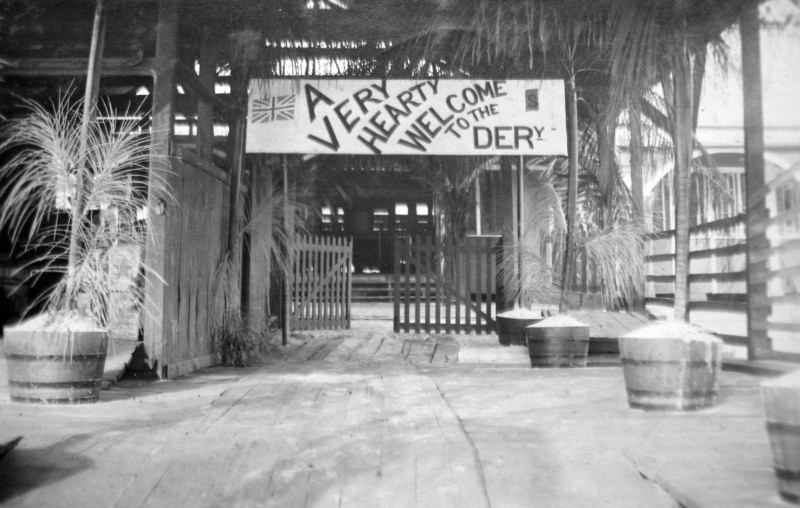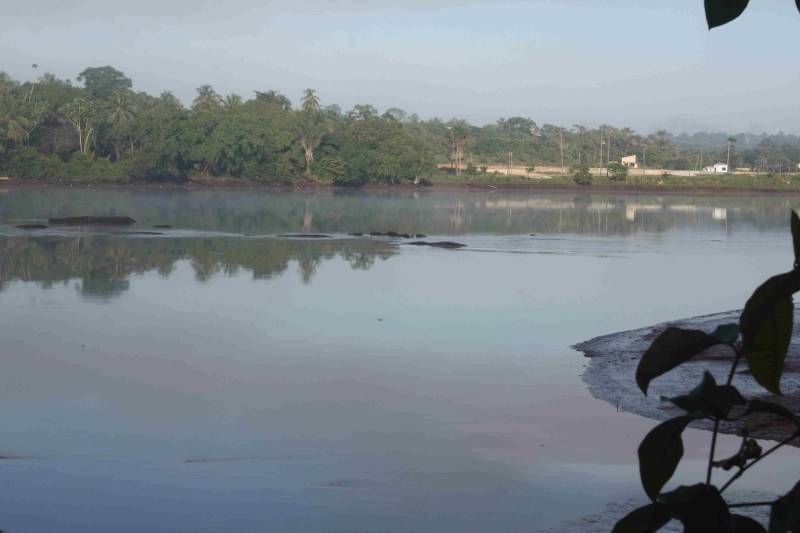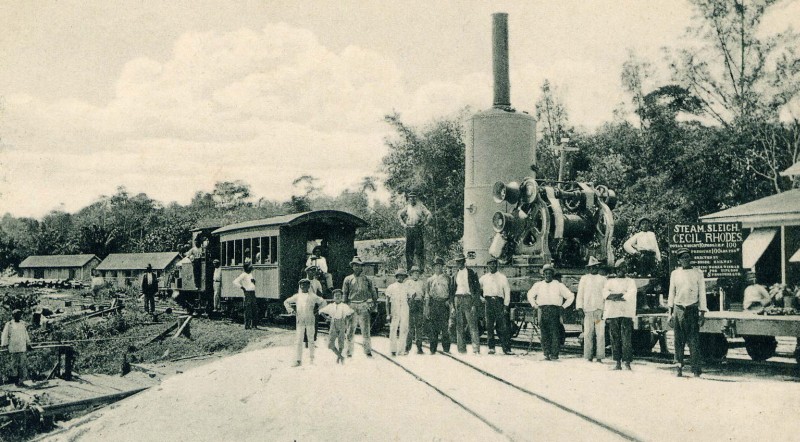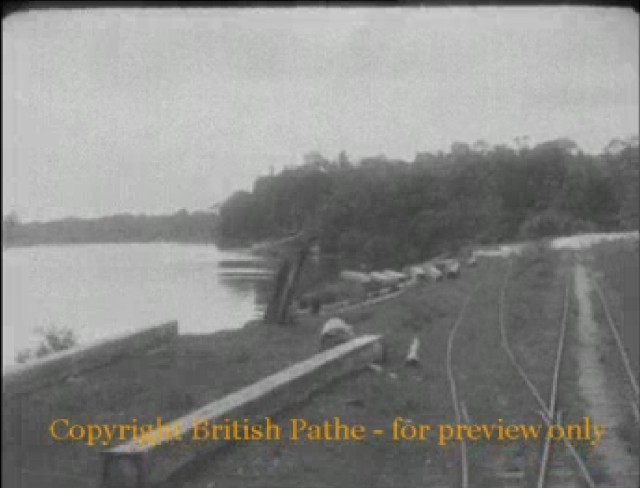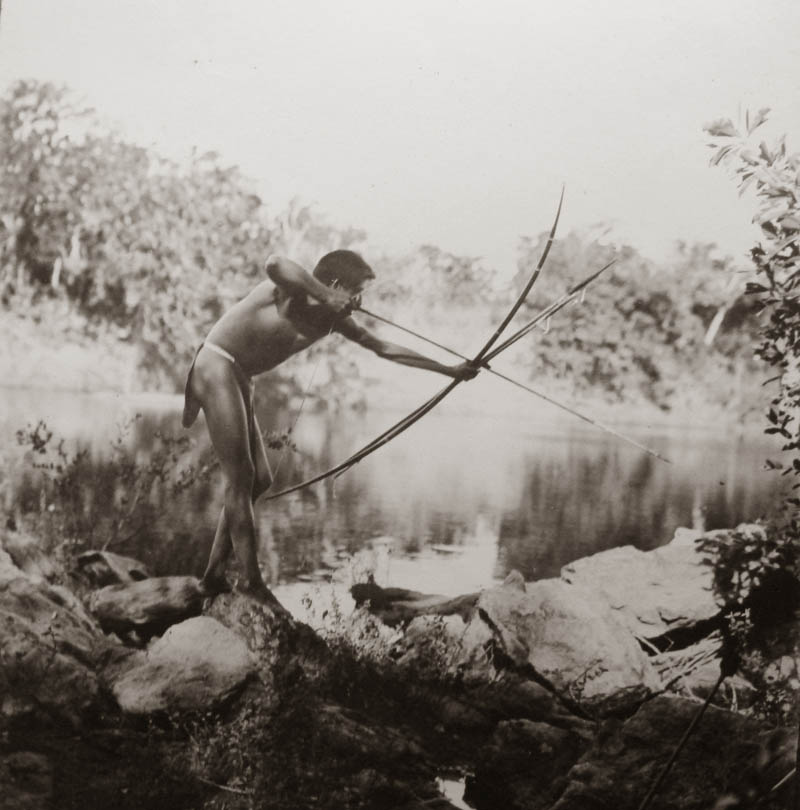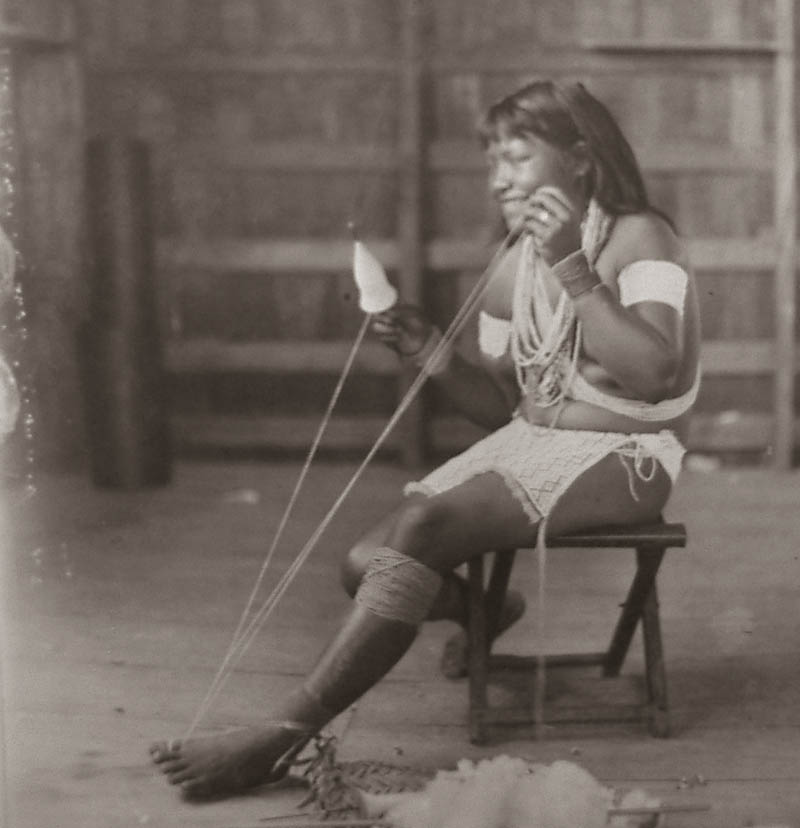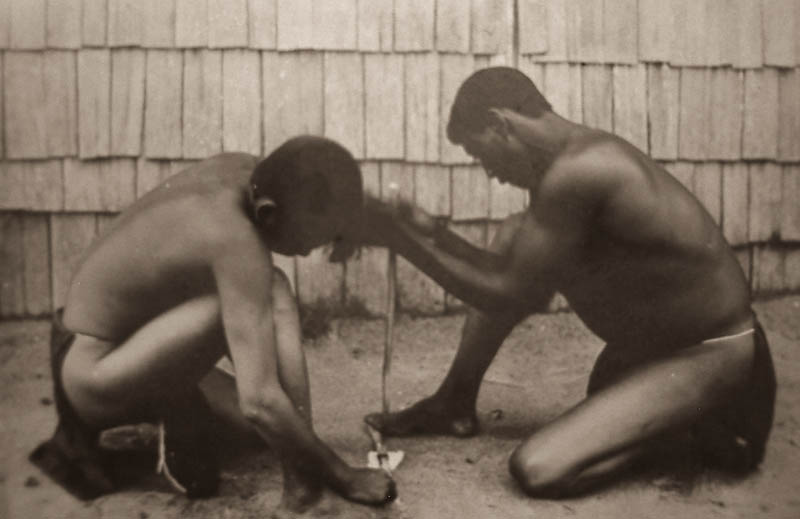by Peter Halder
Colonial Era
Religion played a fundamental role in the British administration of its colony of British Guiana.

Smith Memorial Congregational Church, Brickdam, Guyana (Photo from Amanda Richards on Flickr)
It was most probably the policy of the British that in a multiracial country with many races- African, East Indian, Chinese, Portuguese, the indigenous Amerindian, European and their inter-mixtures- and with different cultures and religious practices, the foundation, growth and spread of the Christian religion, could and would convert, indoctrinate, assimilate and unite the many races into a united nation. The colonialists went further. They recognized that the older generation was probably beyond conversion, indoctrination and assimilation, so their policy was to focus on the children, the new generation.
Churches dotted the landscape of Georgetown and environs, as well as the countryside.
A school system was created that welded the school and church into one unit. For example, the school at St. Stephen,Adelaide and Princess Streets was the St.Stephen Church of Scotland School. The school on Smyth Street was the St. Phillips Anglican School. The one at Sussex and Charles Street was the Carmel Roman Catholic School; the one in Kingston was the Kingston Methodist School and at High Street and Brickdam was the St. Andrews Anglican School and so on. And as an integral part of the plan, a church was next or near to the school. Children of all races and religions (including Chinese, Hindus and Moslems) attended the school and were required to say a Christian prayer at the beginning and end of the school day and attended church services once a month. The strategy was in full gear until the colony became independent. With independence, church schools came to an end.
Apart from the well-known Catholic, Anglican, Methodist, Presbyterian, Episcopalian, Lutheran and other Churches, there were the Jehovah’s Witnesses, Assemblies of God, Pilgrim Holiness, Unity, Seventh Day Adventist and others. Not wishing to seem obvious in their policy, there were also Hindu Temples and Moslem Mosques but they were far outnumbered by Christian Churches.
There was also a little known sect called the Jordanites, all entirely of the African race. The Jordanites, at least in Georgetown, preached individually, along with a Sister. Those who ministered in Georgetown, preached at street corners or at Bourda Green, opposite the Market, Stabroek Market Square,near La Penitence Market and near Kitty Market, mostly on Sunday nights. All used the text of the Holy Bible for their sermons but interpreted them in their own way. There was no singing of Hymns at their religious meetings.

Christ Church, Guyana (Photo from Amanda Richards on Flickr)
History of the Sect
“…For many years, members of the Jordanites in their lily white robes and their Leader with a long staff or crook-stick, were a familiar sight in Guyana. They were members of a Church established by Elder Nathaniel of Jordan at Agricola, East Bank Demerara. Elder Jordan taught a ‘new doctrine’ (free from the popish traditions and based on principles laid down in the Holy Scriptures contained in the Old and New Testaments) as received from Joseph McLaren of Grenada. Elder Jordan established his Church in 1917 and built the first temple at Agricola in 1924. He was succeeded by Elder J.N. Klein.
Both men and women dressed in lily white robes, women wearing white bandannas and men wearing white turbans.
Many of their meetings were held near busy street intersections.
Baptisms took place on the beach of the Atlantic Ocean.
They wore no shoes in their Temple, leaving them outside the door.
Many ate no meat at all, others limited the kinds and quantities of meat they ate.
Jordanites also forbade the use of alcoholic beverages.
The proper name of the Jordanite Church is given as the West Evangelist Millenium Pilgrim Church…” (http://www.encyclopedia.com)
“…And its not only Trinidad and Brazil… argues Raymond Oba Douglas of the Mount Prisgah Spiritual Baptist Archdiocese International Limited. In Guyana, they’re called ‘Jordanites’ because immersion started at the Jordan (River). In St. Vincent they were called ‘Shakers’ and in Jamaica ‘Revivalists.’ But, explains Archbishop Douglas, apart from a few differences, they all have the same general trait, ‘entertainment’ of the Holy Spirit, ‘shakings’ and talking in tongues. It is the Christianity of Africans in the New World…” (Born Again In Living Waters)

St. Anthony of Padua Catholic Church, Buxton, Guyana (Photo Amanda Richards on Flickr)
Tale of a Jordanite Preacher
It was Sunday night and the Jordanite preacher was prepared for his service.
Brother Hezekiah and Sister Deborah were dressed to kill.
The Jordanite was resplendent in a white turban perched securely on top his head, and a long, flowing, lily white robe, held slightly around his waist by a white silk tassel. He had on thick white ‘yachting’ shoes glistening from a coat of Propert’s White Renovator. In his hand, he held a white shepherd’s staff. He was from Agricola on East Bank Demerara. He was tall and lean.
Sister Deborah wore a long, white gown, with a gold coloured tassel tied tightly around her waist,a pair of white Delilah sandals and her head was covered with a white bandanna.
A large, black bottle lamp illuminated the table at which she sat and the surrounding area. On the table, decorated with a white table cloth, was Brother Hezekiah’s Gold Leaf Bible – the edges of the pages were gold-coloured.
A sizeable crowd slowly gathered at the venue on the concrete pavement abutting the La Penitence Rum Shop at Saffon and Sussex Streets.
While he waited for the attendance to increase, he walked up and down, shepherd’s staff in his right hand and a tibiciri fan in his left. He continuously fanned his face as he walked up and down, chanting “Fan me soldier boy fan me, fan me soldier boy fan me, fan me soldier boy fan me, all me sins done gone.” Gold teeth gleamed in his mouth as he chanted.
His chanting and his strutting around attracted the attention of pedestrians and bicyclists who stopped and joined the gathering.
When he recognized that the crowd was large enough and ready to receive his sermon, he walked to the table and put down the fan. He also chose a time when the road traffic along Saffon Street and Sussex Street had dwindled.
The distinguished-looking preacher strode across the rectangular area, divine and sanctimonious looking but with pomposity, to the edge of the space where there was a white flour bag cloth on the pavement and pointed it out to the people.
“My collection flour cloth that I hope you will make bloom,” he said in slow, precise and solicitous tone of voice, “whosoever will can throw his cent and jill (penny), half-a-bit (six cents), bit (eight cents), bit-na-half (twelve cents), shilling (twenty-four cents) or florin (forty-eight cents) on it, and if you will, you can have a Thrill on Blueberry Hill and dash down a dollar bill.”
Exuding confidence, he pampazekked to the centre of the area and launched into his sermon where he left off the previous week on the events surrounding the Biblical story of Lazarus who was raised from the dead.
He reminded his audience about Lazarus and how fond Jesus was of him. He spoke of how Lazarus loved animals, especially dogs. He told the people “Let me remind you that there are animal dogs and there are human dogs.” He evoked a guffaw of laughter.
After about forty minutes into the sermon, he turned to Sister Deborah and told her, “Sister, open that there Gold Leaf Bible and read aloud the verse about the dog and Lazarus.”
Sister Deborah did as ordered. She opened the Bible, pushed it closer to the bottle lamp and read aloud, clearly and distinctly, each word emphasized with driplets of spit, “And moreover the dog licked the sores of Lazarus,” she declared, face as serious as a judge but perspiring from the heat of the bottle lamp. She wiped some spit from the side of her lips, using the back of her right hand.
Brother Hezekiah stopped walking. He faced the crowd, raised his staff in the air and shouted out, “You hear that! All you hear that. All you hard ears people hear that! Sister read that verse again so, my flock here tonight can be filled with the divine words and assimilate and understand them. ”
Sister repeated, taking her time and pausing between each word for emphasis “And moreover the dog licked the sores of Lazarus.”
“All who got ears to hear let him hear and understand. You get it you people? Did you hear clearly and distinctly what Sister Deborah read? Did you hear each individual word clearly? Did you let it sink into your brain? Do you understand what was said? I repeat for your benefit and the glory of God: And moreover the dog licked the sores of Lazarus,” declared the Jordanite Priest in a trumpeting voice but reverently.
Many in the crowd shouted, “Yes we heard. We ain’t deaf. Yes we understand.”
“Let me hear you all together now. May I remind you that this is the Holy Word. Digest it with pleasure like you digest blackpudding, souse, or Russian Bear rum”
All shouted out “Yes, we are with you, ears, heart and soul but don’t try to bamboozle or mamaguy we.”
Brother Hezekiah paused to scan the faces of the crowd and the effect of his sermon. He was convinced they were captivated by it and by his oratory in its delivery.
Confidently and with intent, he pointed to the crowd and said, “Now I will put what you just said to the test. Tell me you all, tell me, tell me, shout it in my ears, what was the name of the dog that licked the sores of Lazarus?”
Shock and awe enveloped and overpowered the audience. They didn’t know and failed to appreciate what the Priest was asking them. What did the name of the dog have to do with the story? No one heard any dog’s name mentioned in any case. Deep silence gripped the crowd. You could have cut the silence with a knife.
“Come on, come on all of you. Come on you offspring of Beelzebub, speak up, not shut up. You just told me you heard and you understood what I and my Sister took time and great pains to propound. So tell me you wise-looking people, what was the name of the dog that licked the sores of Lazarus?” inquired the Preacher.
Complete, absolute and profound silence again greeted the question.
Brother Hezekiah raised his staff in the air, shook it at the crowd and shouted out, ” Oh you hard headed and woe begotten children of this great land, there is none so deaf as he who would not hear. There is none so dumb as he who would not understand. There is none so thunder struck so his tongue is tied. And all you said you all is Christians. Woe is you. A simple divine event like we cited from the Bible many times and you still don’t know the name of the dog even though the Sister read it to you and I repeated it to you!”
Silence continued to prevail.
One small boy in the crowd shouted out, “Well if we deaf and dumb and you is Mr Know All, you tell us the name of the dog since none of us heard any name mentioned.”
Loud cheering greeted the challenge.
The Jordanite shifted his eyes to the boy, stared, then smiled and declared, ” There is wisdom in the voice of the young crying in this wilderness of silence. So let me read the verse one more time, since from what you just said, all you must be have callaloo for brains or your ears have too much bees wax in them. Let me repeat the Holy text: And moreover the dog licked the sores of Lazarus. It is as plain as the stars in the sky above. It is as plain as La Penitence Market behind you. He that eyes to see let him see unless he’s got too much booboo in them. The verse clearly states that the name of the dog is ‘moreover’ for it says clearly, precisely and unequivocally ‘And moreover the dog…’ meaning the dog’s name is “moreover”. The Holy Bible does not make mistakes. And so the wisdom and not a mystery of the Bible is revealed to you all. Blessed are you children of God for receiving his word and glorying in it, no matter what race you are. And since the Lord has glorified you for your presence here tonight, you must in turn glorify him by your generous money offerings to my ministry. It is more blessed to give than to receive the Bible text says so I say unto you, you have received wisdom and enlightenment here tonight and you must in return and with gratitude give generously for what you received. You will be blessed when you do.”
Loud cheers and hand claps greeted the Jordanite’s revelation and oratory.
Silver coins rained down on the white flourbag cloth and also red one dollar bills.



